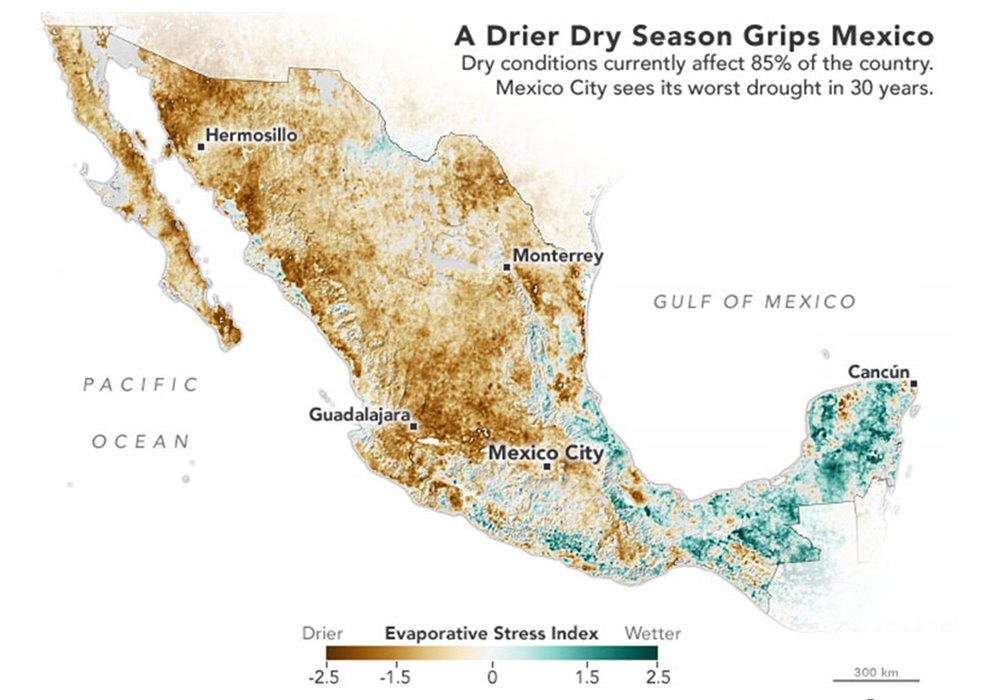Mexican drought puts crops at risk

MEXICO CITY (Reuters) — A long-term drought that has hit two-thirds of Mexico looks set to worsen, with forecasts warning of high temperatures, crop damage and water supply shortages on the horizon.
Experts sounded the alarm in early July that parched crops would lower production as temperatures hit 40 C on June 30 in some parts of northern Mexico, including key farming areas.
“In some states, irrigation is practically disappearing due to lack of precipitation,” said Rafael Sanchez Bravo, a water expert at Chapingo Autonomous University. He said reservoir levels were low, reducing water transfers to farms.
Mexico’s drought parallels that of the western United States and Canada, where crop yields are threatened and water rationing has been imposed in some areas.
While rains were only three percent below average across Mexico last year, the strain on water reserves was exacerbated by increased domestic demand during the COVID-19 pandemic, a U.S. government report said last month.
Hopes to replenish Mexico’s parched reservoirs now hinge on the traditional rainy season, known formally as the North American Monsoon, which is now underway.
“The next three months will be really crucial in how this drought turns out,” said Andreas Prein, an atmospheric scientist for the National Center for Atmospheric Research in Boulder, Colorado.
Much of Mexico gets 50 to 80 percent of its annual rainfall between July and September.
Water shortages are common in parts of the country but have worsened amid heat extremes blamed on climate change, according to scientists and data from the federal water commission.
About 70 percent of Mexico is affected by drought, up from about half in December. About a fifth of the country is experiencing extreme drought compared to less than five percent each year since 2012.
Experts fear the problem will reach more of the 22 million inhabitants of Mexico City’s metro area, which is served by a network of reservoirs. Some districts have no piped drinking water at the best of times.
“I have no doubt that in 2022 there will be a crisis,” said Sanchez, who anticipates possible social unrest. “The reservoirs are completely depleted.”
He encouraged local authorities to invest in rainwater collection for domestic use.
Villa Victoria, an important source for Mexico City, was among 77 of 210 principal reservoirs below 25 percent capacity at the end of June, according to water commission data.
The drought has prompted the government to seed clouds with silver iodide, planned over the next three months in a trio of northern farming states — Sinaloa, Sonora and Chihuahua — in a bid to induce rain.
But this year’s corn production target of 28 million tonnes is still at risk.
“The scenario is pessimistic and we can’t deny we’re worried,” said a senior agriculture ministry official, speaking on condition of anonymity.
Source: www.producer.com

